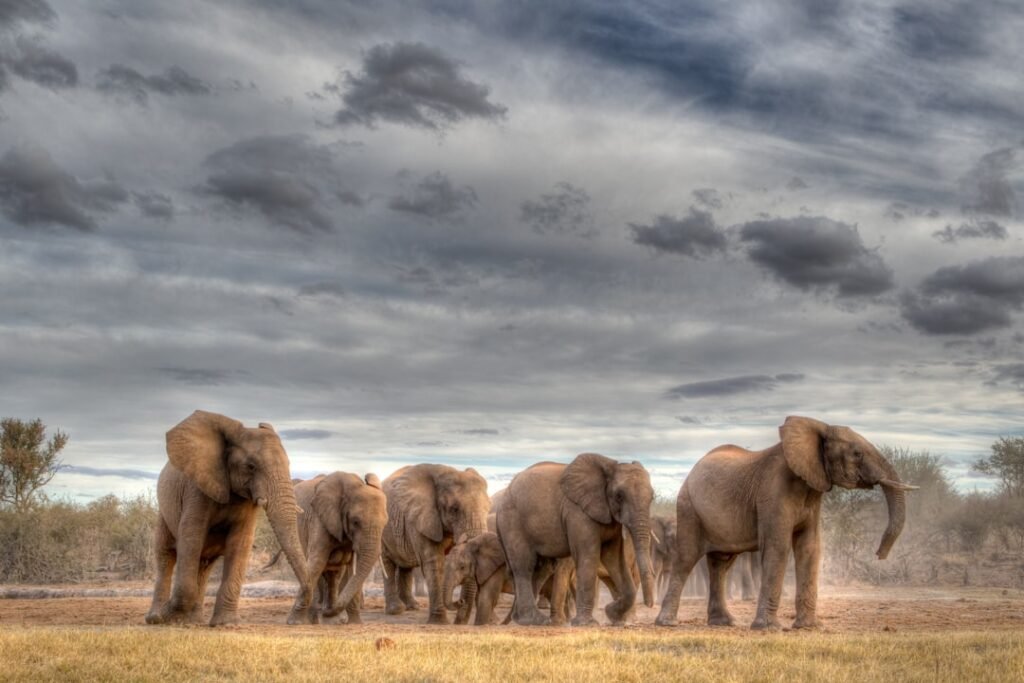On a damp night when the mountains draw their curtains of fog, a team of biologists switched off their headlamps and watched the rock ceiling bloom into a quiet galaxy. The points of light were not stars, but glow worm larvae scattered across limestone like sparks from a hidden forge. The discovery reframes a familiar landscape: beneath trailheads and picnic overlooks, a second world flickers into being after dark. What looks like magic is an ecosystem’s hard math – energy budgets, delicate food webs, and tiny predators baiting the air with light. The mystery isn’t only that they glow; it’s how such fragile lives persist in places that seem almost empty.
The Hidden Clues

At first glance, the caves felt quiet, just the slow drip of water and the smell of wet stone, but the clues were everywhere if you knew how to look. Filaments hung from ledges like dew-beaded harp strings, each strand tipped with sticky droplets that catch midges drawn to the soft light. The team traced these snares back to clusters of larvae tucked in crevices, their bodies faintly luminous even before night settled in. Freshly shed skins lay curled on the stone, a breadcrumb trail of growth and survival. In a few corners, faint smears on the ceiling mapped last night’s rain, where nutrients and tiny insects seeped in from the forest above.
I’ve crouched in caverns before, and the first time I saw a ceiling flicker to life I felt the same tug you get under a clear winter sky. You count the lights without meaning to, wondering where the pattern starts and ends. Down here, the pattern is a census, a way of reading population health thread by thread. Each glowing larva is a vote that the cave still functions, still breathes. That little spark is also a warning that abundance can vanish with one careless step.
A Cave Sky, Pixel by Pixel

When the biologists mapped the glow, they worked in slow motion, moving as if time itself might crumble a rock. Red-light lamps protected dark vision while cameras gathered long exposures, turning faint dots into measurable constellations. The images looked like city maps seen from an airplane, with bright corridors along moist drip lines and dimmer patches where air currents dried the rock. By repeating the photos over several nights, they tracked how clusters shifted, grew, or winked out. Even small changes in humidity sketched new borders, showing where the cave’s microclimate nudged larvae to relocate.
Counting light is deceptively simple, yet it captures what an insect net can miss. Nets snag the bold and the unlucky; the camera listens to the whole room. A string of six bright points one week turning to four the next becomes a story of predation, metamorphosis, or drought sneaking in from a hotter-than-usual day. It’s field biology as time-lapse poetry, the kind that turns pixels into behavior. And in caves, behavior is the only language that carries.
From Ancient Tools to Modern Science

Glow worms are not new to science, but the toolset has changed, and with it the questions. Early naturalists relied on lanterns and notebooks, sketching silk threads and guessing at diet from what was stuck to them. Now, environmental DNA sampling lets researchers test the water in drips and pools for traces of everything from gnats to salamanders. Low-light sensors measure the cave’s heartbeat – temperature, carbon dioxide, and humidity – minute by minute. Portable sequencers can identify the glow worm’s relatives almost in real time, shrinking the gap between fieldwork and lab bench.
Old and new mesh in satisfying ways. A hand lens still matters when you want to see the tiny beads on a fishing line of silk, and kneepads still matter when you spend hours on cold rock. But photogrammetry can stitch hundreds of images into a 3D cave model, so positions of glow clusters are mapped with the accuracy of a surveyor. Machine learning can later count those points without bias, flagging unusual arrangements that deserve a second look. The core habit remains the same: move slow, write clearly, pay attention.
Who Are These “Glow Worms”?

In North America’s Appalachian region, many of the so-called glow worms are the larvae of fungus gnats in the family Keroplatidae, known locally as dismalites. They glow to lure prey, not to signal mates, and they hunt with silk lines studded with sticky droplets. The light comes from a chemical reaction – luciferin meeting oxygen with help from enzymes – that releases energy as a blue-green glow gentle enough to hold in your palm. Hungry larvae tend to glow brighter, essentially advertising more ferociously when they need a meal. When they’re ready, the larvae pupate and vanish from the ceiling’s star map, completing a life cycle timed to the cave’s slow pulse.
It’s easy to confuse them with fireflies, which flash in forests across the same mountains each spring. But fireflies are beetles that use light mostly for courtship, while these larvae are fly relatives and use light like a neon bait shop above a night stream. The difference matters because it tells us how to protect them; disturb their fishing lines and you erase their dinner. It also tells us why certain cave corridors shine brighter than others. Where the airflow is gentle and moisture steady, the larvae have the upper hand.
Why It Matters

Caves run on a tight budget. Most energy trickles in from above as leaf fragments, dissolved nutrients, and unlucky insects that drift through entrances and cracks. Glow worms convert that dribble into a food web, turning midges into light and light into more midges caught in a feedback loop as elegant as it is fragile. Studying them clarifies how carbon moves through subterranean systems and which passages serve as the main highways for life. It also gives conservationists a living indicator of cave health that’s easy to see and hard to fake.
Compared with traditional insect counts that require active collecting, light mapping is less invasive and arguably more honest about the cave’s baseline. It avoids flooding the system with human scent and footsteps, and it captures the places our nets never reach. The method scales, too: what works in one North Carolina cave can be standardized across the region. That comparability is gold in conservation, where decisions hinge on subtle differences rather than dramatic swings. A small shift today can prevent a bigger loss tomorrow.
Fragility Underfoot

Caves do not bounce back quickly when disturbed. A single touch can smear biofilms that took years to form, while a stray snack crumb can warp the delicate balance that keeps mold and scavengers in check. Outside the entrance, stormier rain patterns push pulses of sediment into subterranean streams, smothering the ledges where larvae hang their nets. Inside, heat from crowds and bright lights can dry ceilings just enough to make silk threads sag. Even lint from clothing becomes food for unintended guests that crowd out native insects.
There are broader hazards, too, the kind that creep in quietly. Agricultural runoff changes water chemistry in karst, and warming trends shift humidity belts deeper into caves where glow worms can’t follow. Nearby bat colonies battling fungal disease force managers to adjust access rules, which in turn changes traffic patterns and their impact. The larvae are hardy in their own way, but their resilience depends on the rock around them staying predictably cold and damp. In caves, predictability is the home team advantage.
The Future Landscape

What comes next looks surprisingly high-tech for such quiet places. Ultralow-light cameras paired with noise-reduction algorithms can record glow without the need for prolonged exposures that risk warming the ceiling. Compact microclimate loggers, some the size of a coin, can be left in place for months and retrieved on a single visit. Field-deployable DNA sequencing can flag when closely related species are mingling, sharpening our sense of local adaptation. And 3D cave models can integrate all of that – light, humidity, genetics – into a single living map.
The global implications aren’t hypothetical. As droughts intensify and storms grow sharper, caves will act like barometers for groundwater stability and surface health. Tracking a glow worm cluster year to year becomes a way to take the pulse of whole landscapes. This is where technology earns its keep, not by replacing field notes but by extending them across seasons and regions. It’s the difference between a snapshot and a documentary that never turns off the camera.
How You Can Help

Even small choices add up underground. If you visit caves – guided or wild – follow posted decontamination steps, keep lights dim, and never touch formations or ceilings where silk threads might be anchored. Stick to established paths and keep voices low, since sound can unsettle roosting wildlife and push insects into awkward flight. Pack out everything, including tiny trash that feels too small to matter. And when in doubt, choose a red-light headlamp and look without leaning.
Support the people doing the slow work. Local conservancies and museums run monitoring programs that need volunteers willing to count, photograph, and process data after hours. Land trusts protect the recharge zones above caves so the water stays clean and steady. If you’re a teacher or parent, share the story: predators that fish with light are the kind of wonder that turns curiosity into care. The more eyes we have on the cave sky, the safer those stars remain.

Suhail Ahmed is a passionate digital professional and nature enthusiast with over 8 years of experience in content strategy, SEO, web development, and digital operations. Alongside his freelance journey, Suhail actively contributes to nature and wildlife platforms like Discover Wildlife, where he channels his curiosity for the planet into engaging, educational storytelling.
With a strong background in managing digital ecosystems — from ecommerce stores and WordPress websites to social media and automation — Suhail merges technical precision with creative insight. His content reflects a rare balance: SEO-friendly yet deeply human, data-informed yet emotionally resonant.
Driven by a love for discovery and storytelling, Suhail believes in using digital platforms to amplify causes that matter — especially those protecting Earth’s biodiversity and inspiring sustainable living. Whether he’s managing online projects or crafting wildlife content, his goal remains the same: to inform, inspire, and leave a positive digital footprint.




